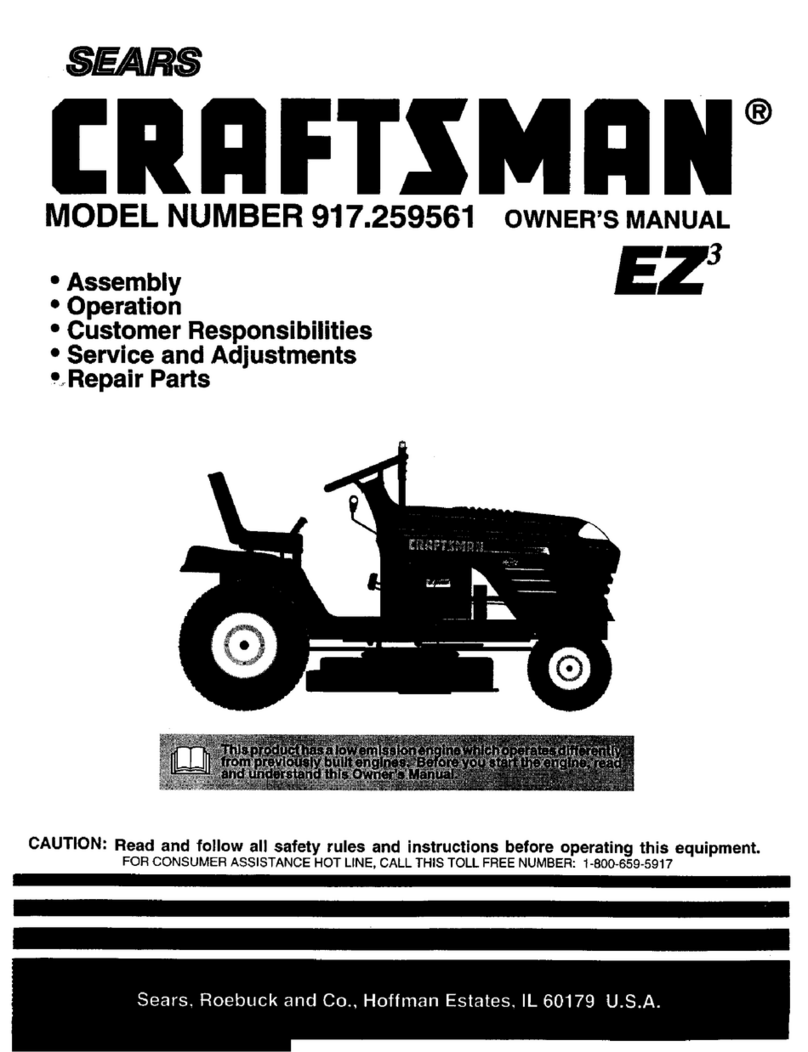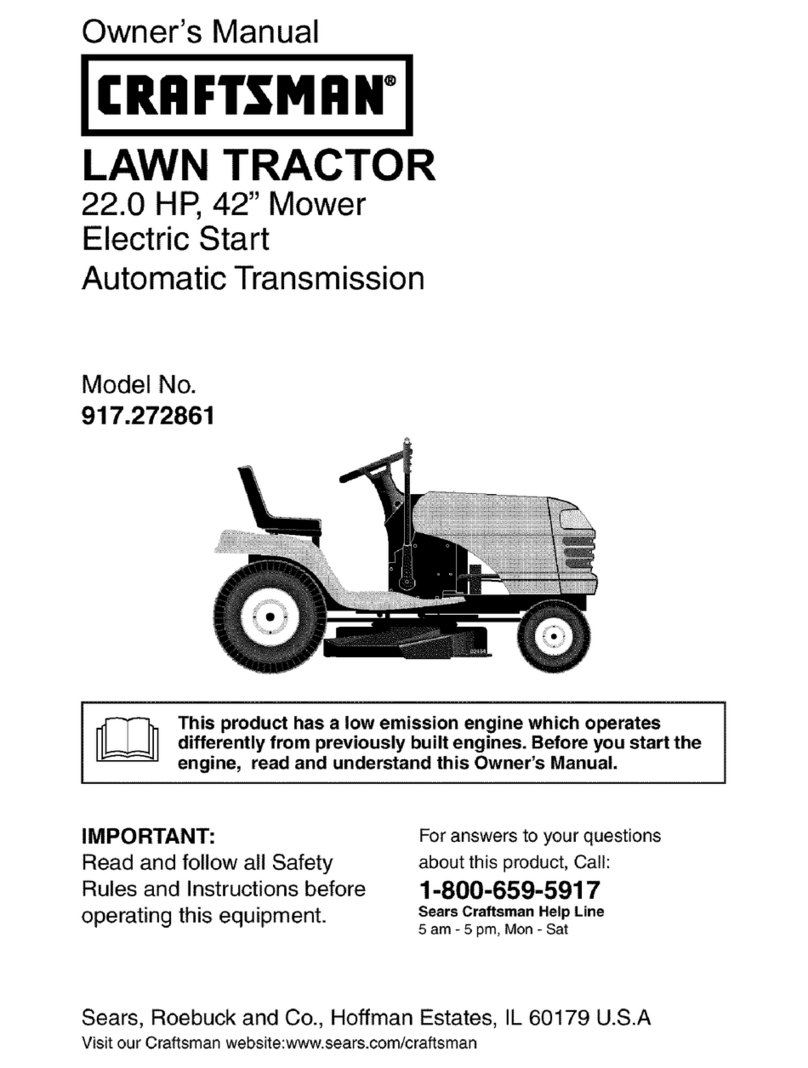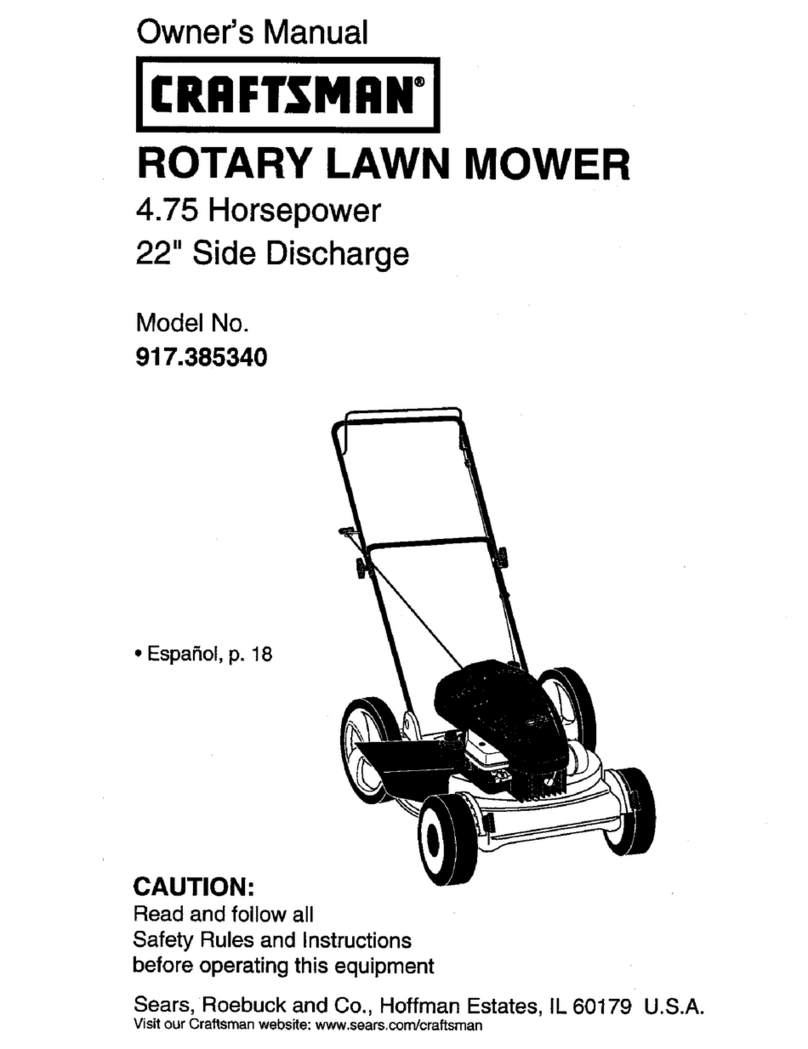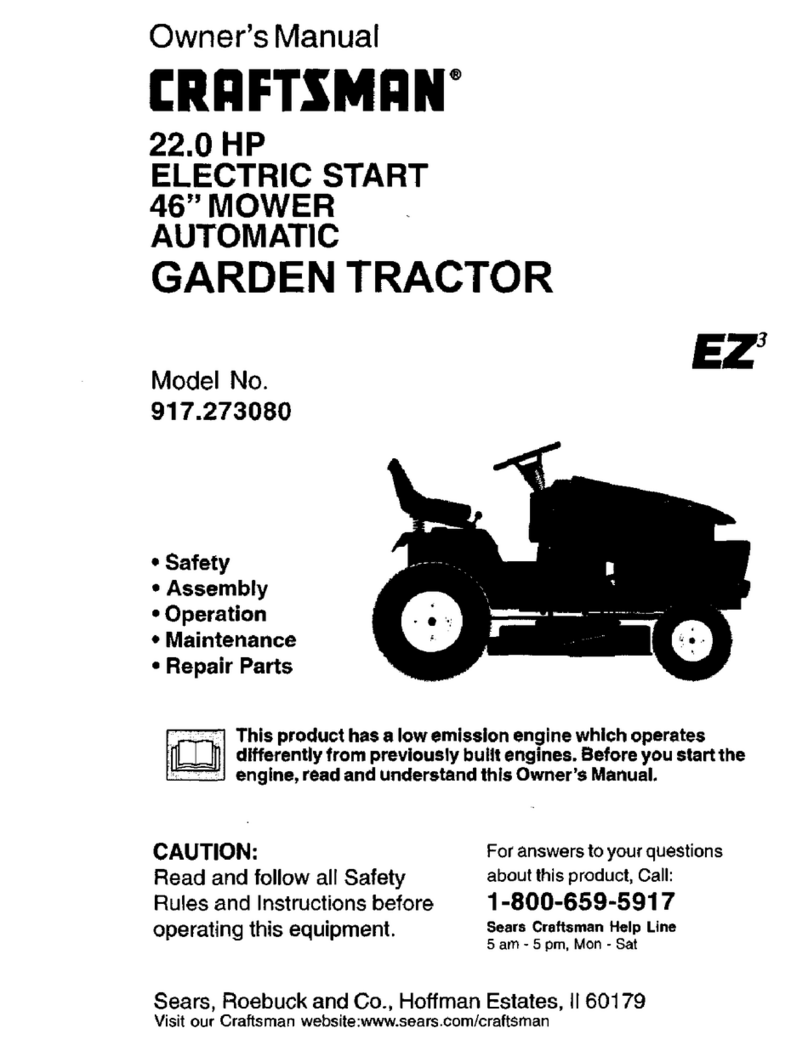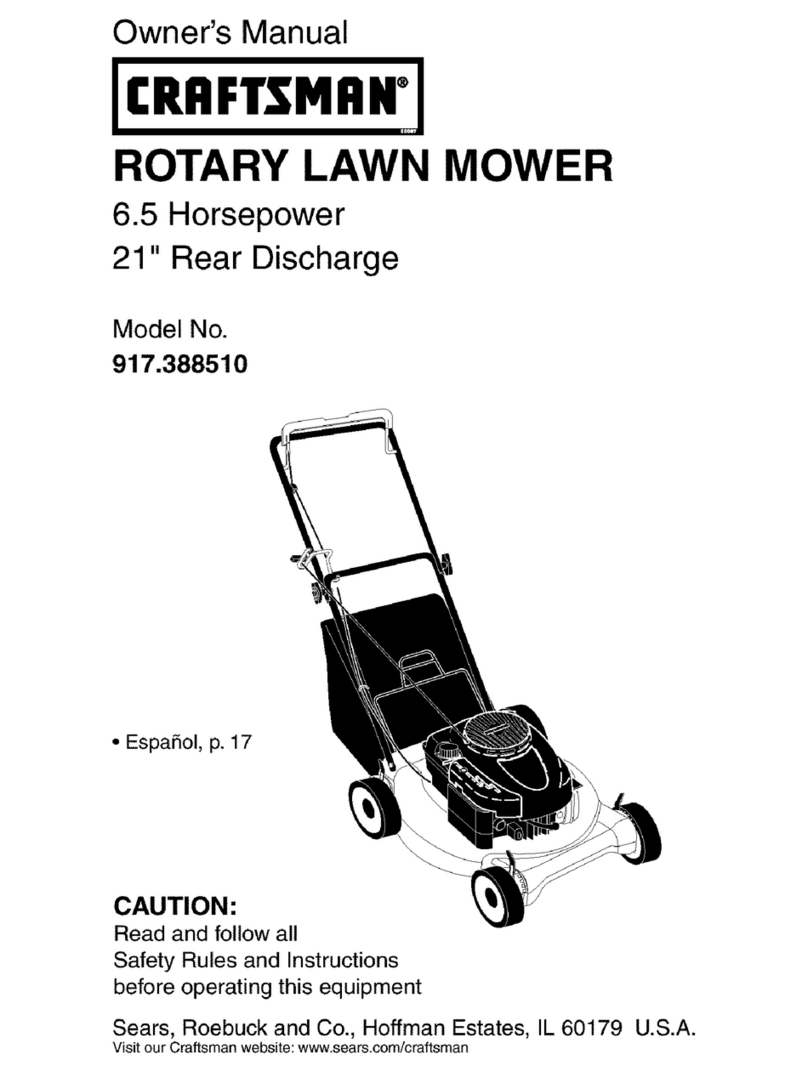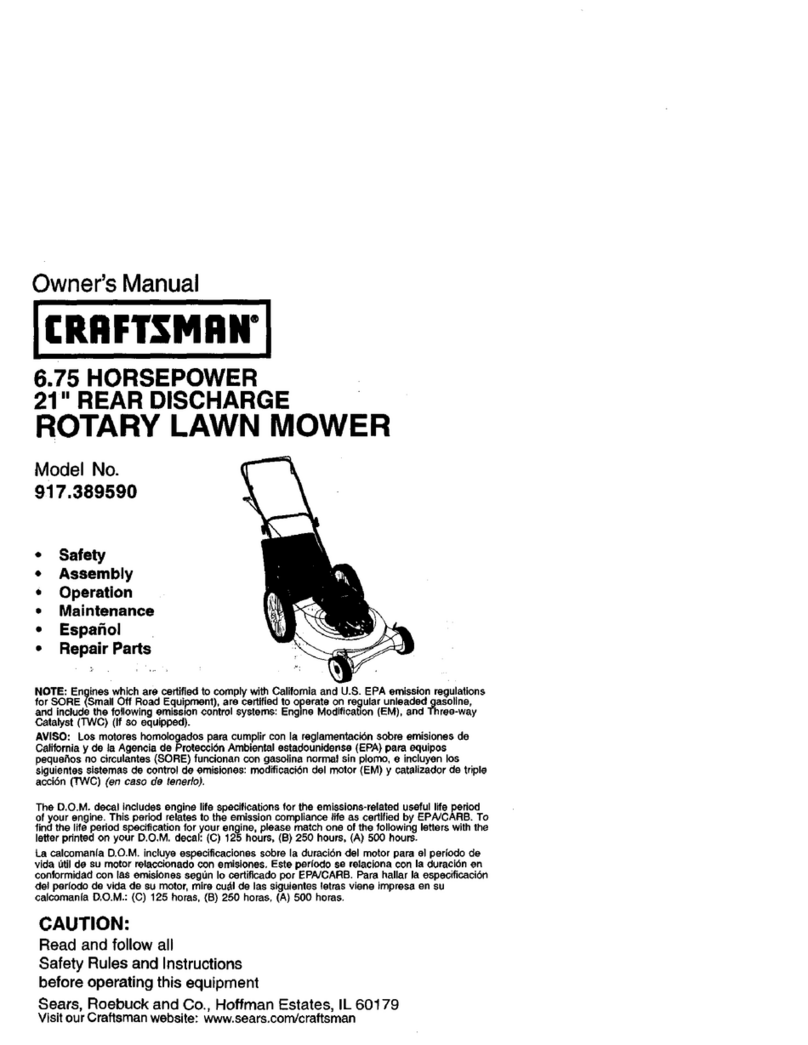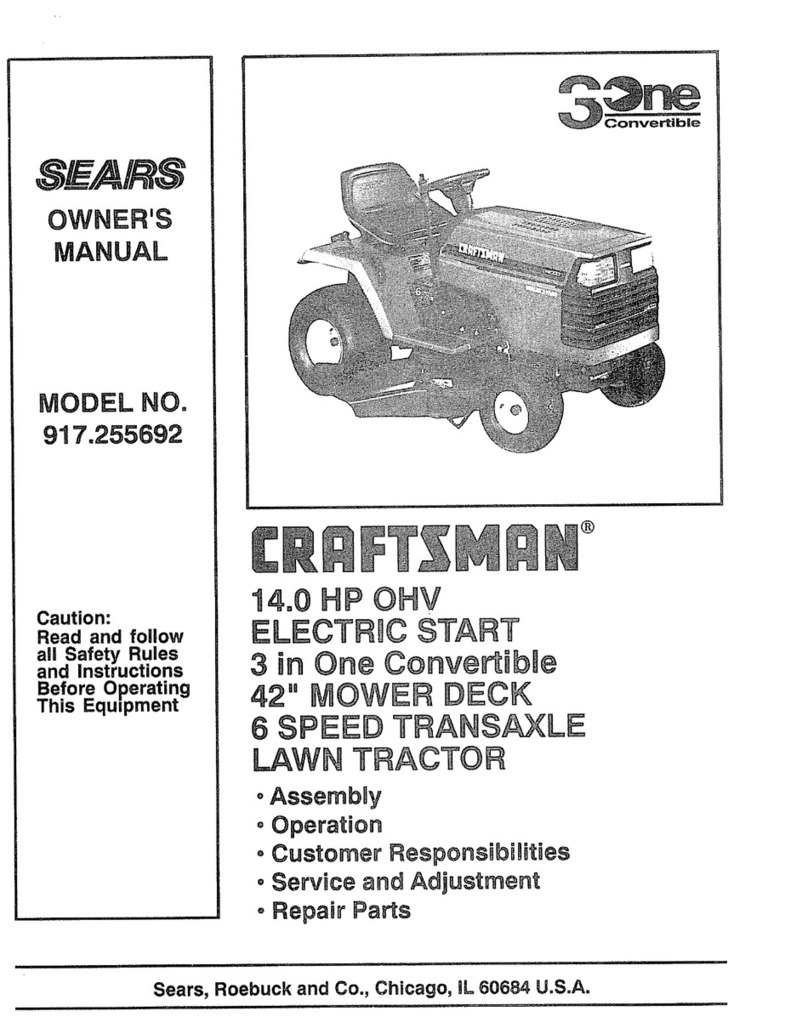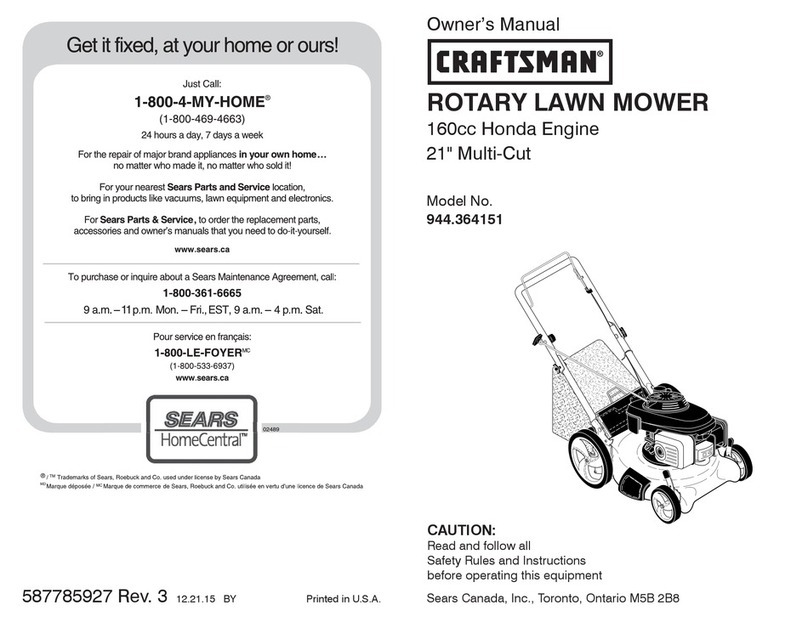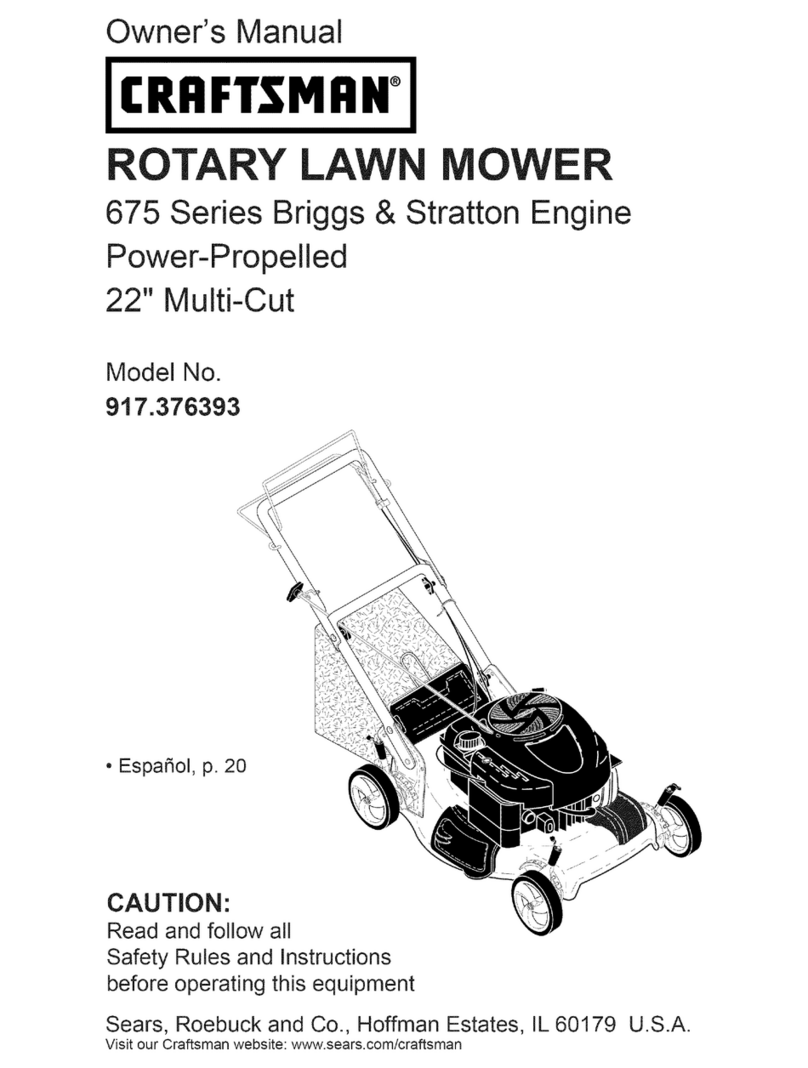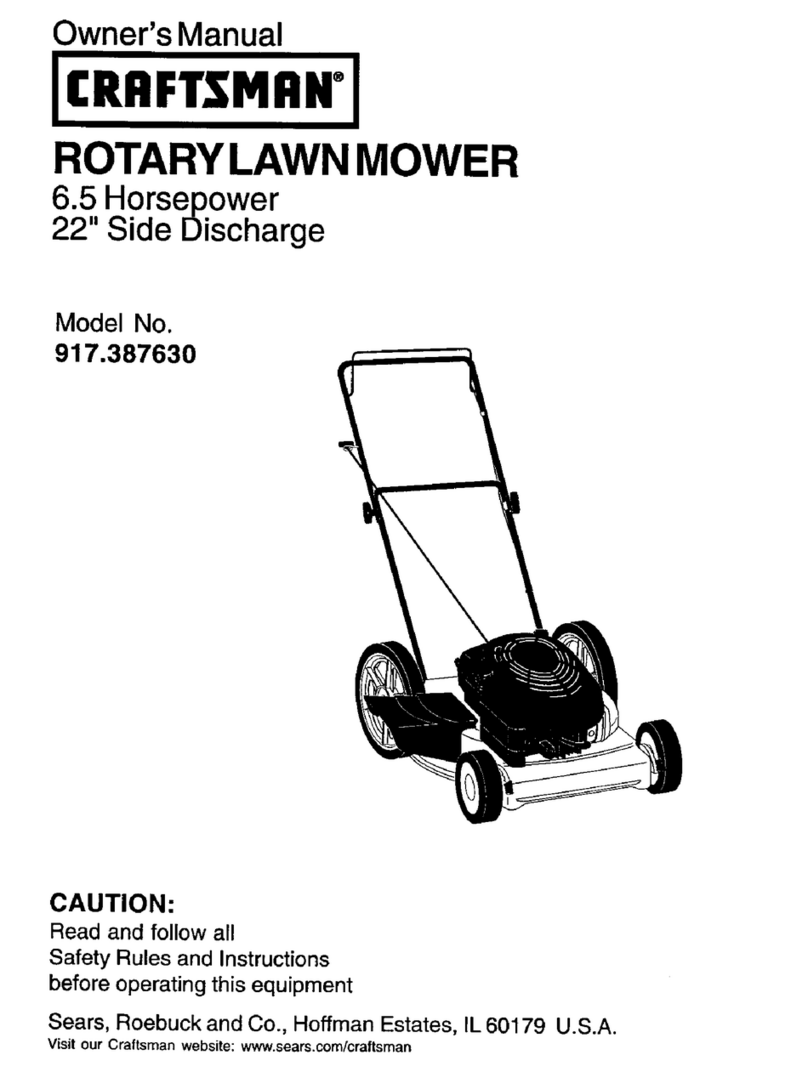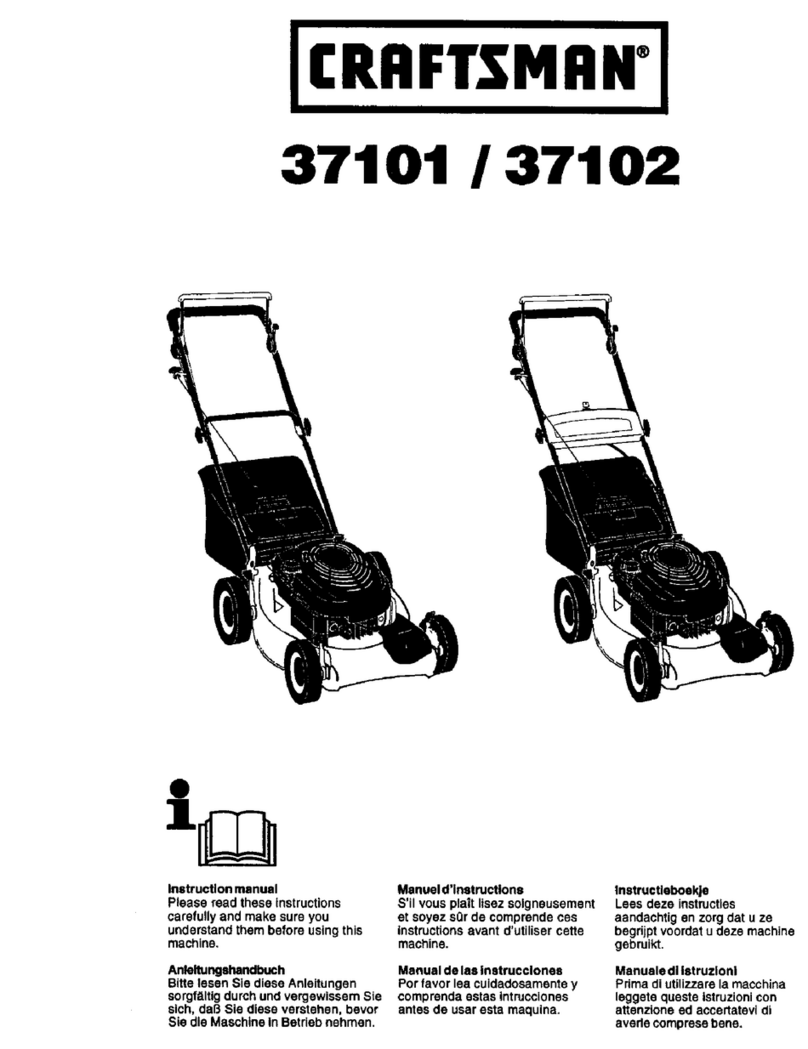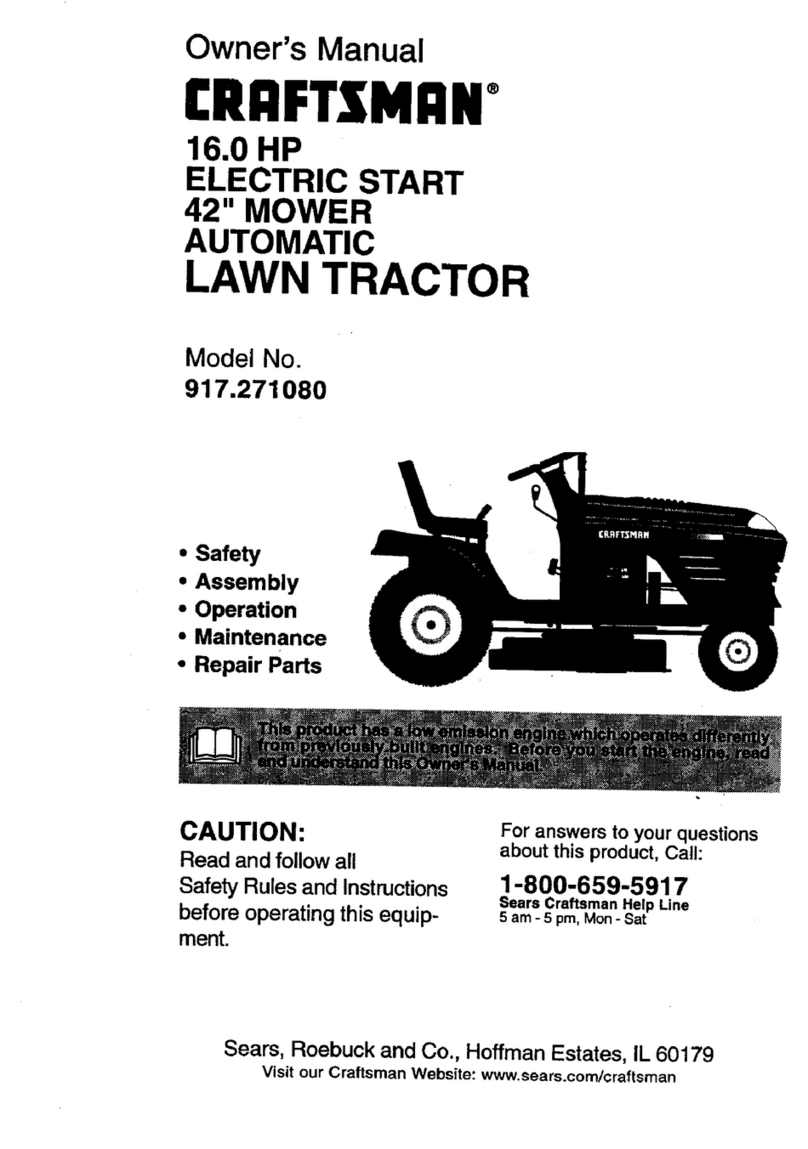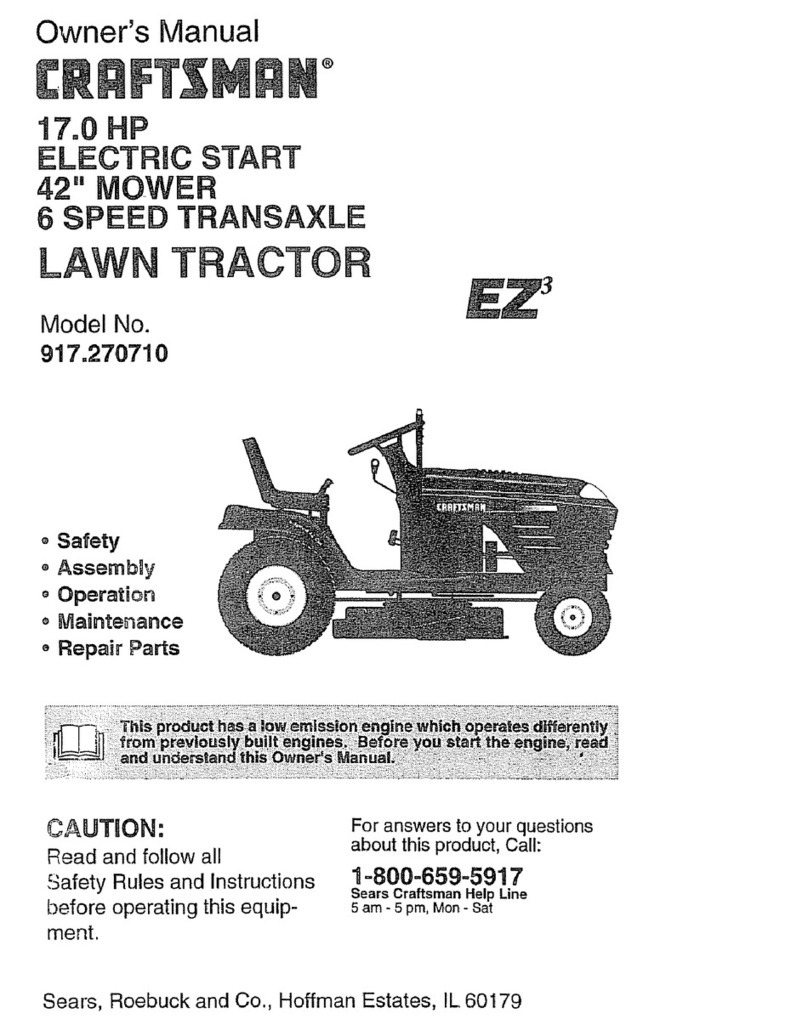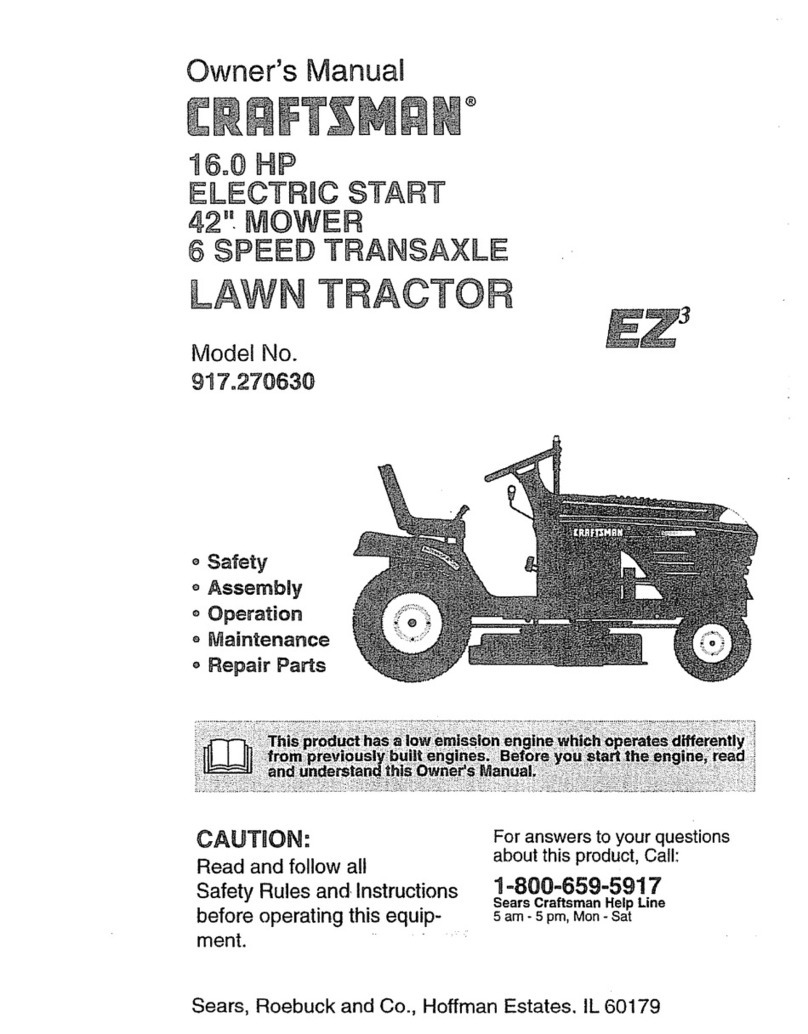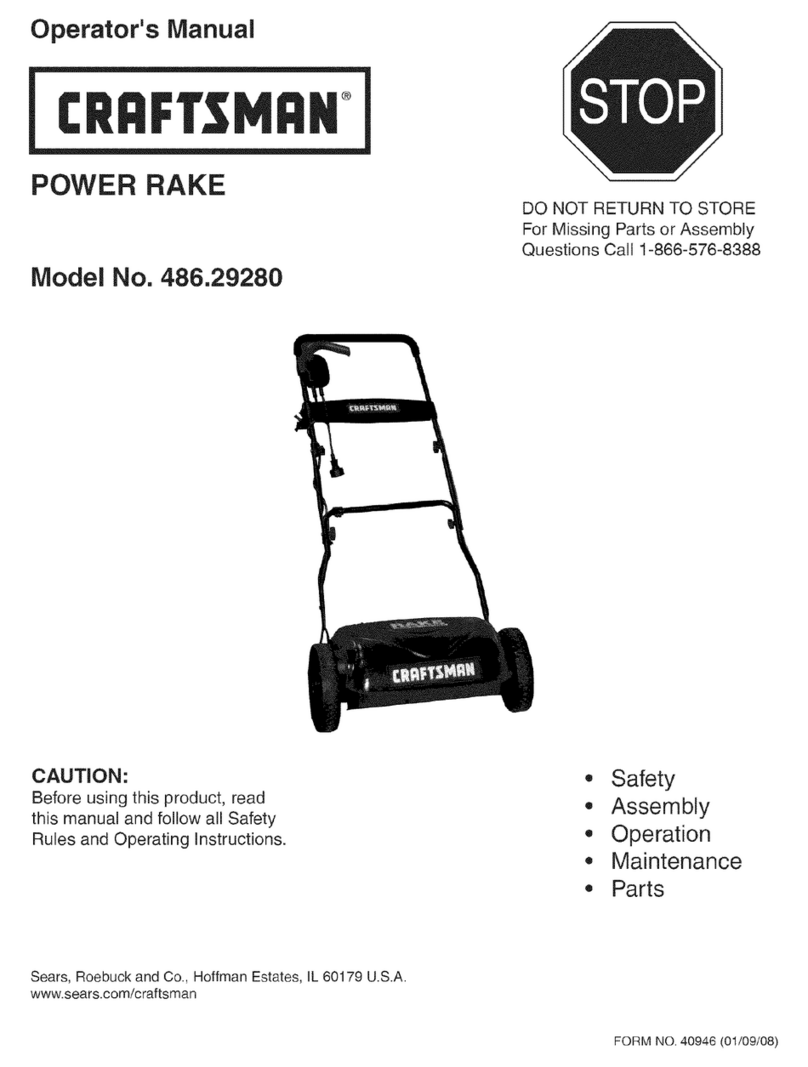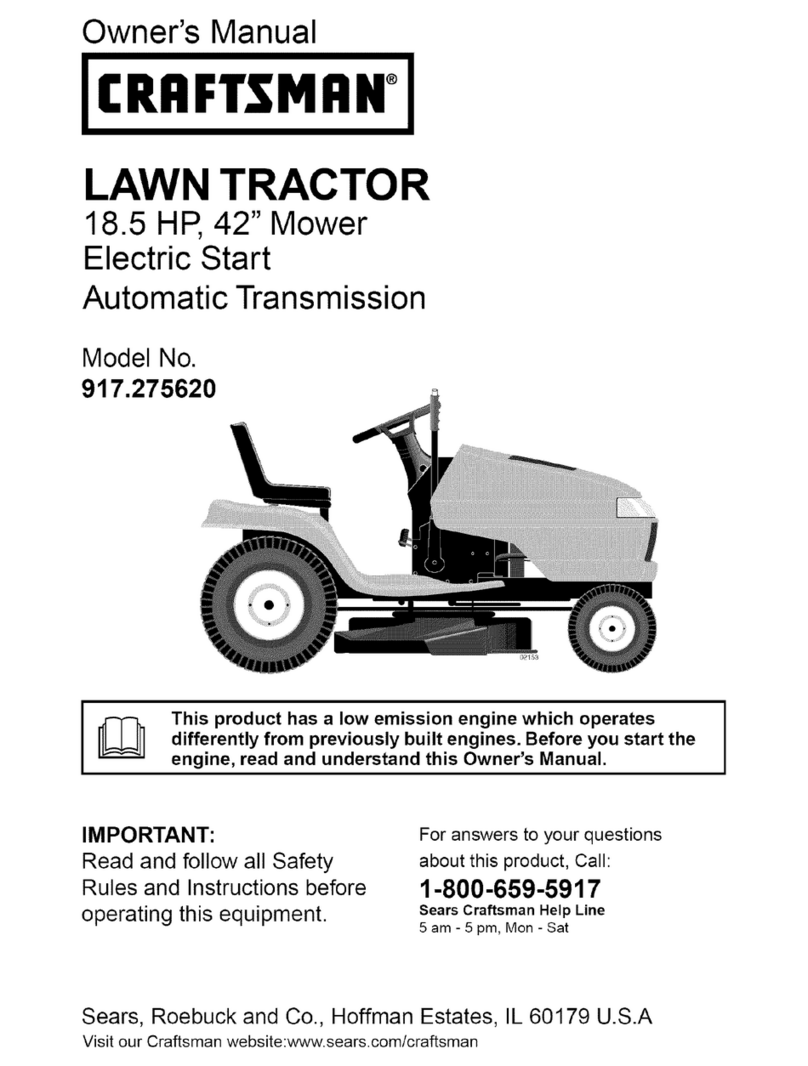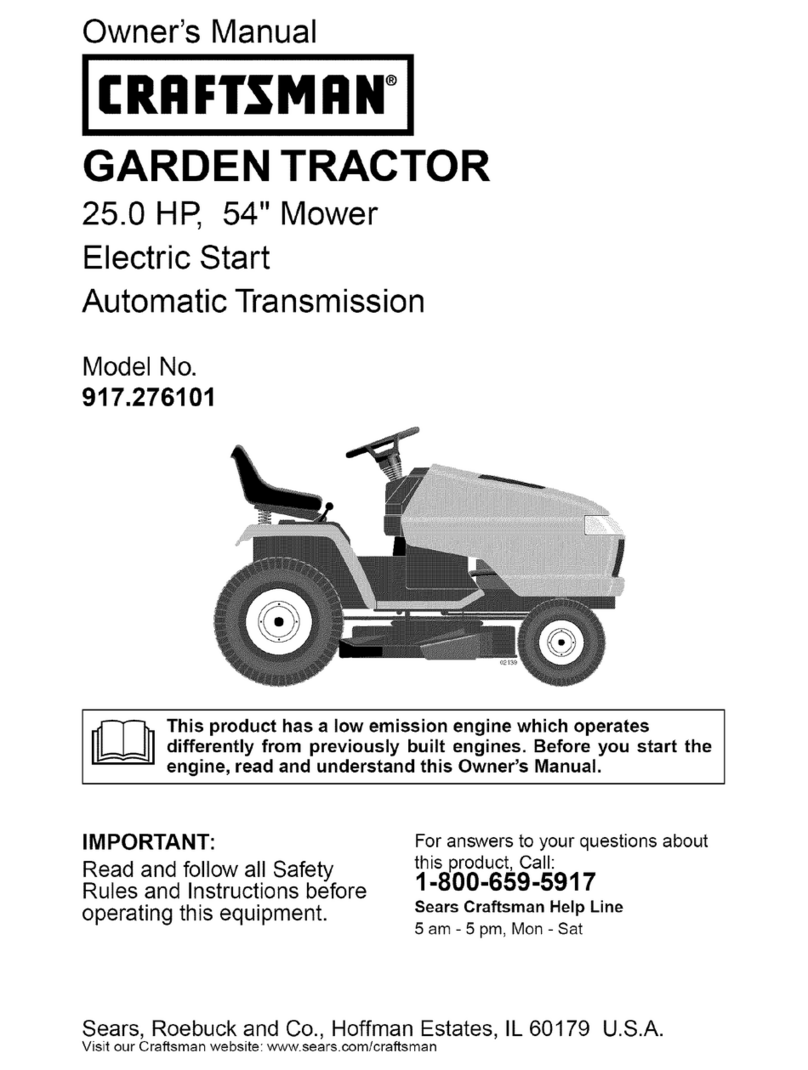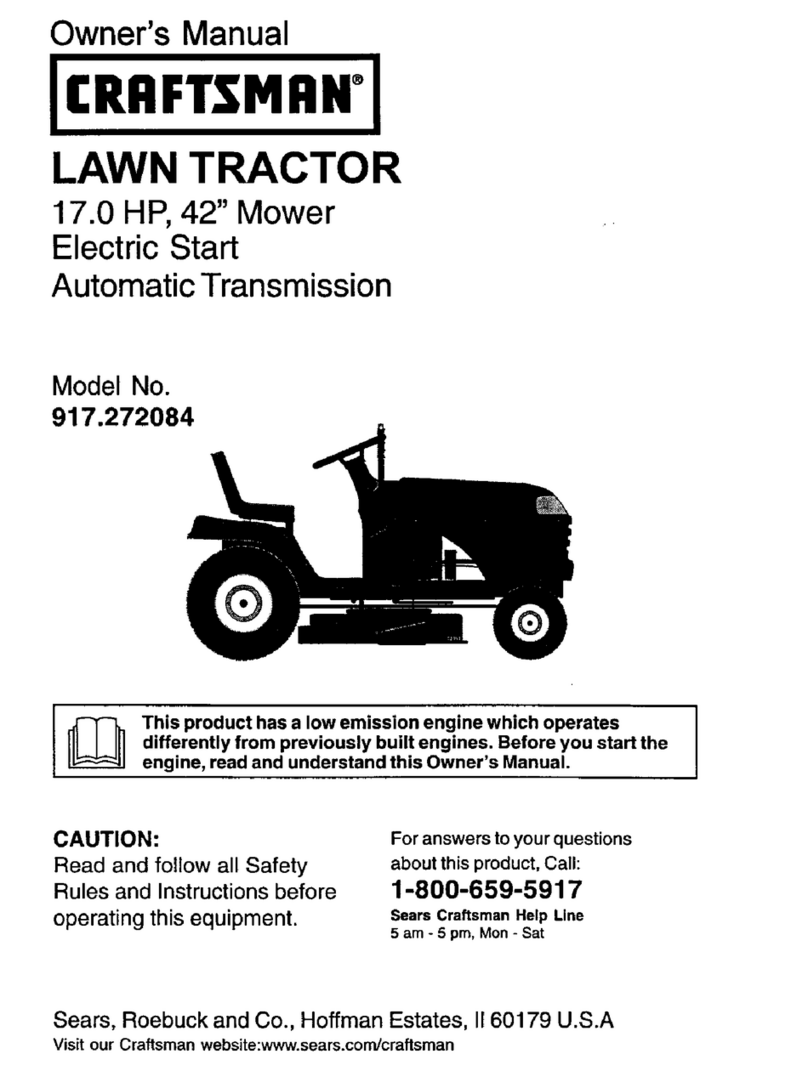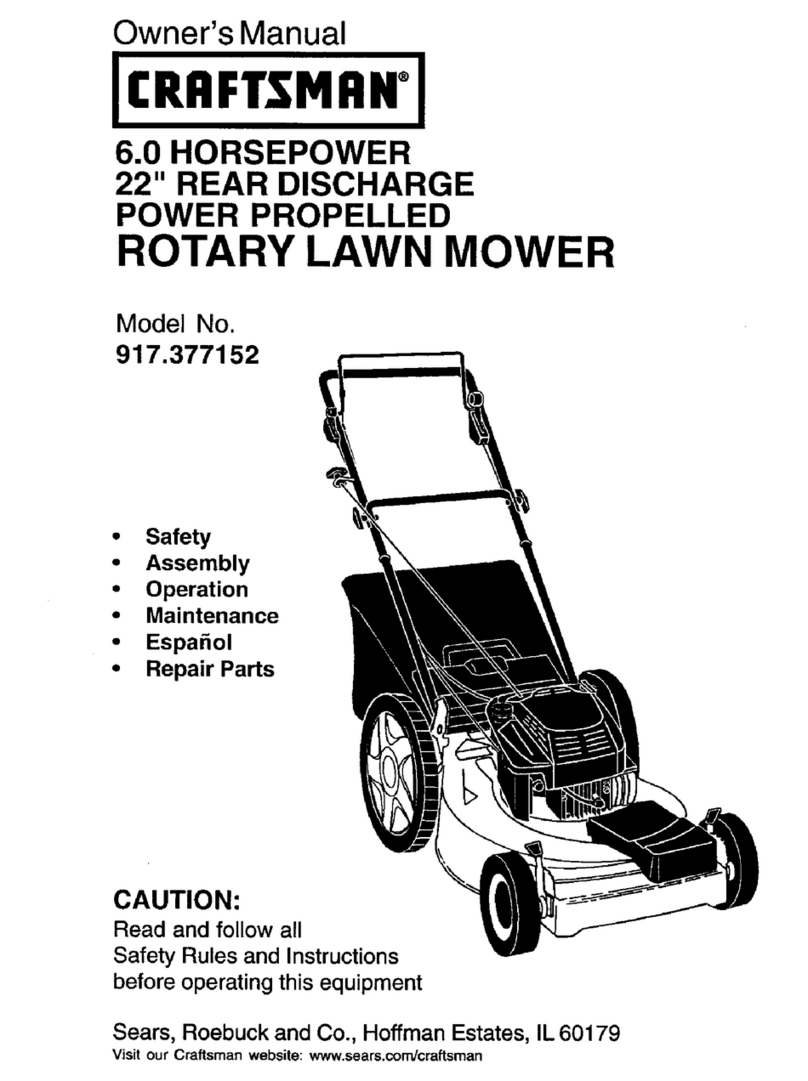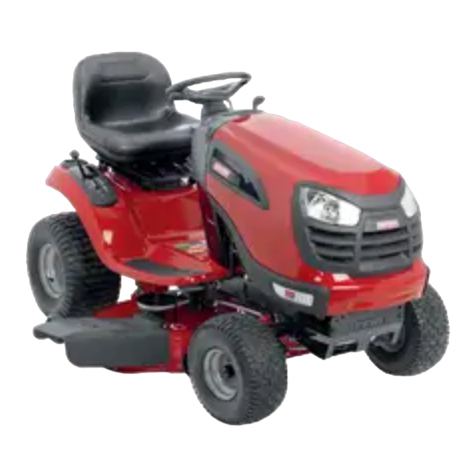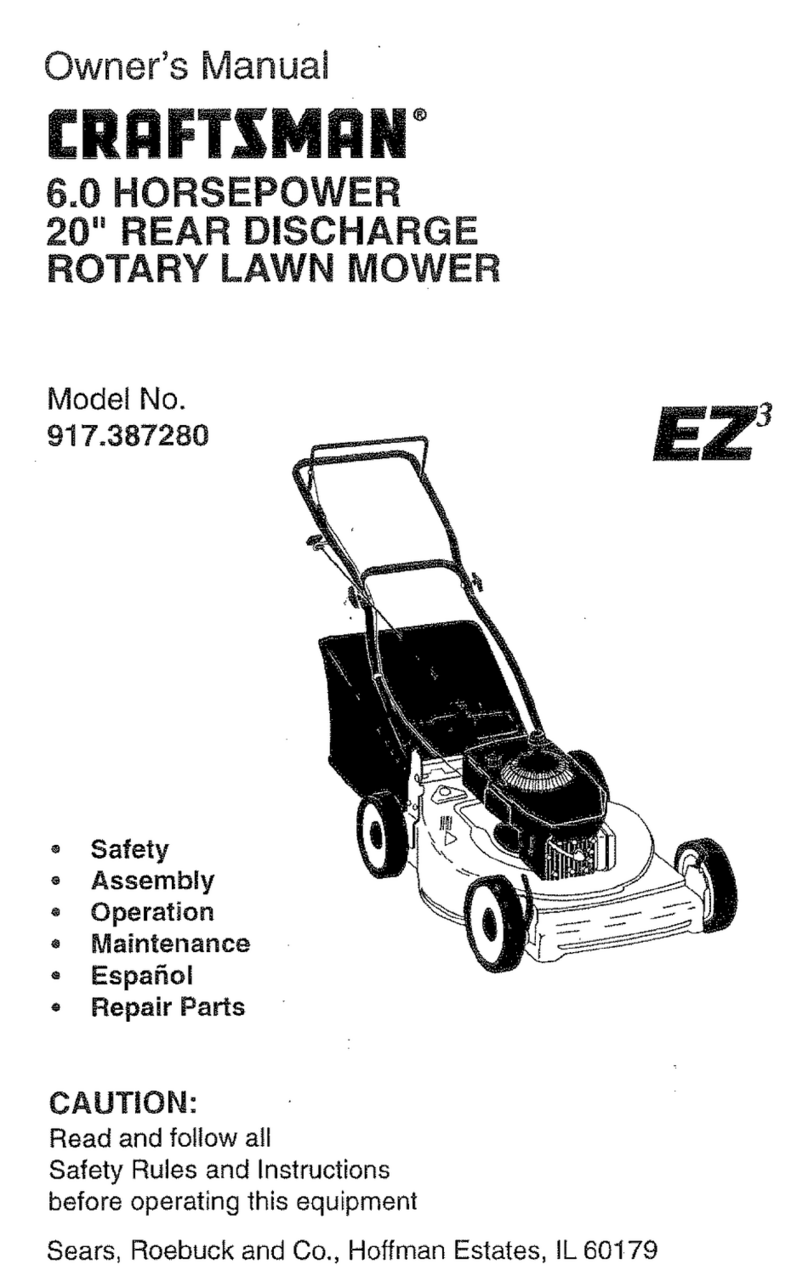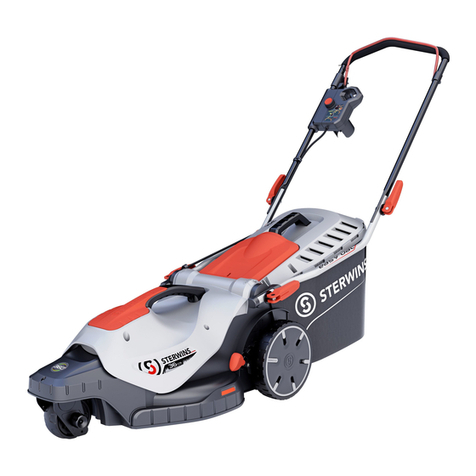IMPORTANT:Thiscuttingmachineiscapableofamputatinghandsandfeet and
throwinq objects. Failure to observe the following safety instructions could result in
senous injury or death.
I. GENERAL OPERATION
•Read, understand,and followall
instructionsin themanualand on the
machinebeforestarting.
,Only allowresponsibleadults,who are
familiar withthe instructions,tooperate
the machine.
•Clear thearea of objectssuchas
rocks,toys,wire,etc., whichcouldbe
pickedup and thrownbytheblade.
• Besurethe area isclear ofother
peoplebeforemowing. Stopmachine
ifanyoneentersthe area.
• Never carry passengers.
• Do not mowin reverseunlessabso-
lutelynecessary. Alwayslookdown
and behind beforeand whilebacking.
• Be aware ofthe mowerdischarge
directionand do notpointitat anyone.
Do not operatethe mowerwithout
eitherthe entiregrasscatcheror the
guard in place.
•Slow downbeforeturning.
• Never leave a runningmachine
unattended. Alwaysturnoffblades,set
parkingbrake,stop engine,and
remove keysbefore dismounting.
•Turn offbladeswhen not mowing.
• Stopengine beforeremovinggrass
catcheror uncloggingchute.
•Mow onlyin daylightor goodartificial
light.
•Do not operatethe machinewhile
undertheinfluenceof alcoholor drugs.
• Watch for trafficwhenoperatingnearor
crossingroadways.
•Use extracare when loadingor
unloadingthe machineintoa traileror
truck.
•Data indicatesthatoperators,age 60
yearsand above,are involvedina
largepercentageOfddingmower-
relatedinjuries. These operators
shouldevaluatetheirabilityto operate
the ridingmowersafelyenoughto
protectthemselvesand othersfrom
seriousinjury.
II. SLOPE OPERATION
Slopesam a majorfactor relatedtoloss-of-
controland tipover accidents,which can
resultin severeinjuryor death. Allslopes
requireextracaution.Ifyoucannotbackup
thestopeor ifyoufeel uneasyon it,do not
mowit.
DO:
•Mow up and down slopes, not across.
•Remove obstacles such as rocks, tree
limbs, etc.
•Watch for holes, ruts, or bumps.
Uneven terrain,could overturn the
machine. Ta/I grass can hide ob-
stacles.
•Use slow speed. Choose a low gear
so that you will not have to stop or shift
while on the slope.
•Follow the manufacturer's recommen-
dations for wheel weights or counter-
weights to improve stability.
•Use extra cam with grass catchers or
other attachments. These can change
the stability of the machine.
•Keep all movement on the slopes s/ow
and gradual Do not make sudden
changes in speed or direction.
•Avoid starting or stopping on a slope, if
tires lose traction, disengage the
blades and proceed slowly straight
downithe slope.
DO NOT:
•Do not turn on slopes unless neceS-
sary, and then, tum slowly and gradu-
ally downhill, if possible.
Do not mow near. drep-offs, ditches, or
embankments. The mower could
suddenly turn over if a wheel is over
the edge of a cliffor ditch, or if an edge
caves in.
•Do not mow on wet grass. Reduced
traction could cause sliding.
•Do not try to stabilize the machine by
putting your foot on the ground.
•Do not use grass catcher on steep
slopes.
3

